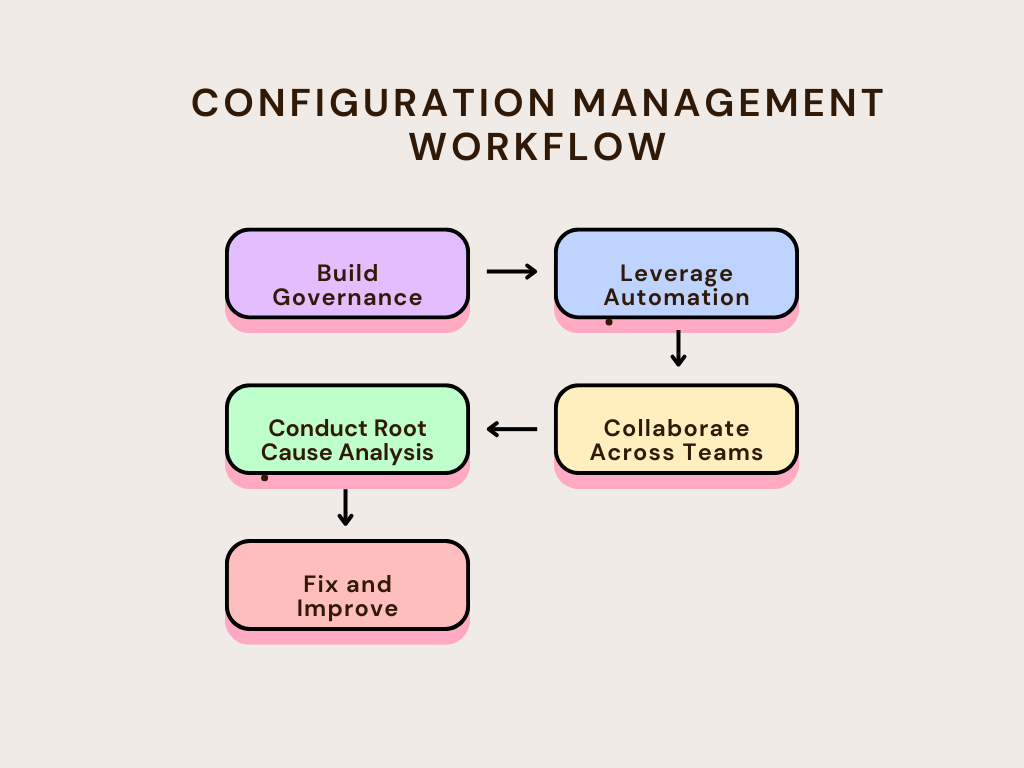How to Solve Configuration Management Challenges: A Proven Approach
 Ashish Kadian
Ashish Kadian
Configuration management is a cornerstone of system reliability and security. However, it’s not uncommon to face challenges like missing tools, outdated packages, and unresolved vulnerabilities. These issues can slow down your team and expose your systems to risks.
In this post, I’ll share a proven approach to tackle these challenges, using EcoSync, our internal configuration management tool, as a real-world example.
1. Build Governance Around Your Tools
The first step is to understand why your tools aren’t being deployed consistently. At Teradata, we noticed that EcoSync was missing on a large number of nodes. By observing patterns and identifying gaps, we created a governance framework to ensure consistent deployment.
Actionable Tip: Start by auditing your tools and identifying gaps in their deployment. Create a governance framework to ensure consistency.
2. Leverage Automation for Visibility
To stay proactive, we implemented automation to generate weekly reports. These reports provided real-time insights into the status of EcoSync across nodes, helping us identify and address issues quickly.
Actionable Tip: Automate regular reports to track the status of your tools and packages. This will give you the visibility you need to stay ahead of issues.
3. Collaborate Across Teams
Collaboration is key to resolving configuration management challenges. We worked closely with our Ops team to dig deeper into the issues. Together, we conducted a root cause analysis and uncovered several problems:
A missing step in the documentation.
A failing locking mechanism preventing package updates.
Code-level issues that needed attention.
Actionable Tip: Partner with your Ops or DevOps team to resolve issues efficiently. Collaboration often leads to faster and more effective solutions.
4. Conduct Root Cause Analysis
Don’t just fix the symptoms—understand the underlying issues. For example:
Documentation Gaps: Are there missing steps in your documentation?
System-Level Failures: Are there issues like failing locking mechanisms?
Code-Level Issues: Are there bugs or inefficiencies in your code?
Actionable Tip: Always dig deeper to uncover the root cause of issues. This will help you implement long-term solutions.
5. Fix and Improve
Once you’ve identified the root causes, take action:
Update Documentation: Ensure clarity and completeness.
Address System-Level Failures: Fix issues like failing locking mechanisms.
Conduct Code Reviews: Improve reliability by addressing code-level issues.
Real-World Example:
At Teradata, we used this approach to resolve vulnerabilities and streamline our configuration management process. By building governance, automating reports, collaborating with Ops, and fixing root causes, we transformed EcoSync into a reliable tool.
Key Takeaways
Governance is Critical: Ensure consistent deployment of your tools.
Automation Saves Time: Use automated reports to stay proactive.
Collaboration is Key: Work across teams to resolve issues efficiently.
Root Cause Analysis Matters: Dig deeper to uncover and fix underlying issues.
What challenges have you faced in configuration management, and how did you overcome them?
Mention in the comments below!
Subscribe to my newsletter
Read articles from Ashish Kadian directly inside your inbox. Subscribe to the newsletter, and don't miss out.
Written by

Ashish Kadian
Ashish Kadian
Hi, I'm Ashish Kadian, a DevOps Engineer with a passion for automation and agile methodology. Currently at Teradata, turning complex problems into automated solutions and other time you will see me as oncall vigelente . When I'm not wrestling with Kubernetes clusters or creating Terraform scripts, you'll find me sharing my DevOps tales (and mistakes) here. From that time I fixed a stubborn automation after 148 builds (yes, I counted!) to implementing security scans that actually make sense - I share it all. 🛠️ What I geek out about: Cloud architecture that doesn't break the bank Security automation that doesn't drive developers crazy Making Gitlab pipelines pretty (okay, at least functional) Finding creative ways to solve problems on cloud ✨ Current mission: Building stuff that helps other DevOps engineers either they are on my team other times they are strangers from the internet. Sometimes it works, sometimes it becomes a blog post about what not to do! 💡 Follow along if you: Love DevOpsWant to learn from my mistakes (there are plenty!) Enjoy technical deep-dives Are curious about DevSecOps implementations 🎯 Previously turned coffee into code at IIT Bombay and now building cool things with AWS, Kubernetes, and whatever shiny tool catches my attention. Let's connect and talk about cool stuff! Drop a comment, share your stories, or just say hi! P.S. If you're wondering why my Jenkins builds are passing - it's probably temporary. 😅